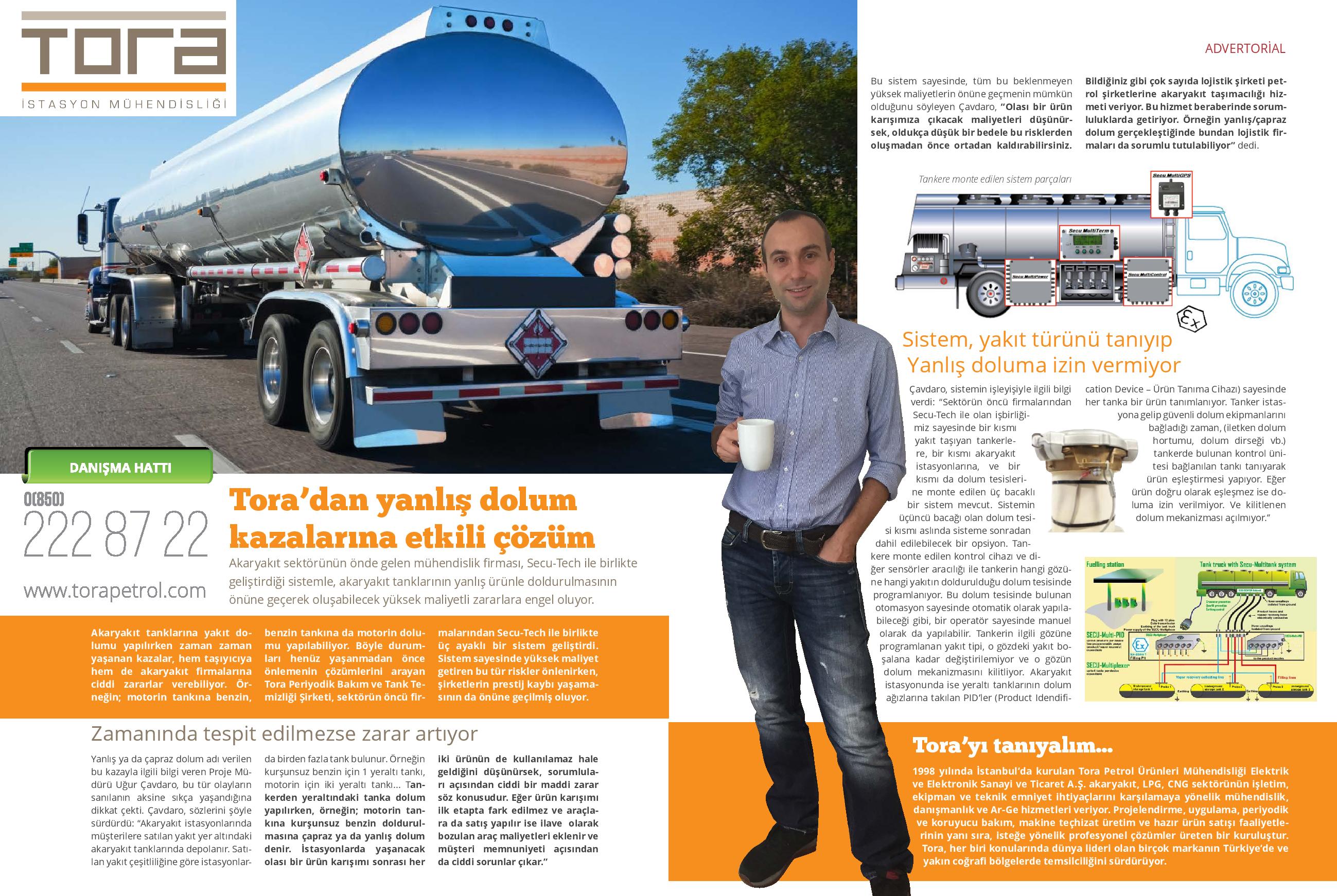16.11.2015 Istanbul
Misfilling Prevention
To explain the incorrect/cross-filling; The fuel sold to customers at gas stations is stored in underground fuel tanks. According to the variety of fuel sold, there are multiple tanks at the stations. For example, 1 underground tank for unleaded gasoline, 2 underground tanks for diesel. When filling from the tanker to the underground tank, for example, filling the diesel tank with unleaded gasoline is called cross or wrong filling. To explain our solution;
Thanks to our cooperation with Secu-Tech, one of the leading companies in the sector, there is a three-legged system that is partially installed in tankers carrying fuel, some in fuel stations, and some in filling facilities. The third leg of the system, the filling plant part, is actually an option that can be included in the system later.

Figure1: System parts mounted on the tanker
By means of the control device and other sensors mounted on the tanker, which fuel is filled into which compartment of the tanker is programmed in the filling facility. This can be done automatically thanks to the automation in the filling plant, or it can be done manually thanks to an operator.
The fuel type programmed into the relevant compartment of the tanker cannot be changed until the fuel in that compartment is empty and locks the filling mechanism of that compartment. At the fuel station, a product is defined for each tank thanks to the P.I.D (Product Idendification Device) attached to the filling mouths of the underground tanks. When the tanker arrives at the station and connects the safe filling equipment (conductive filling hose, filling elbow, etc.) The control unit in the tanker recognizes the connected tank and matches the product. If the product does not match correctly, filling is not allowed. And the locking filling mechanism does not open.
In addition, all these equipment and software work in accordance with EN 14116 and EN 13616 standards and of course have ATEX certification.
